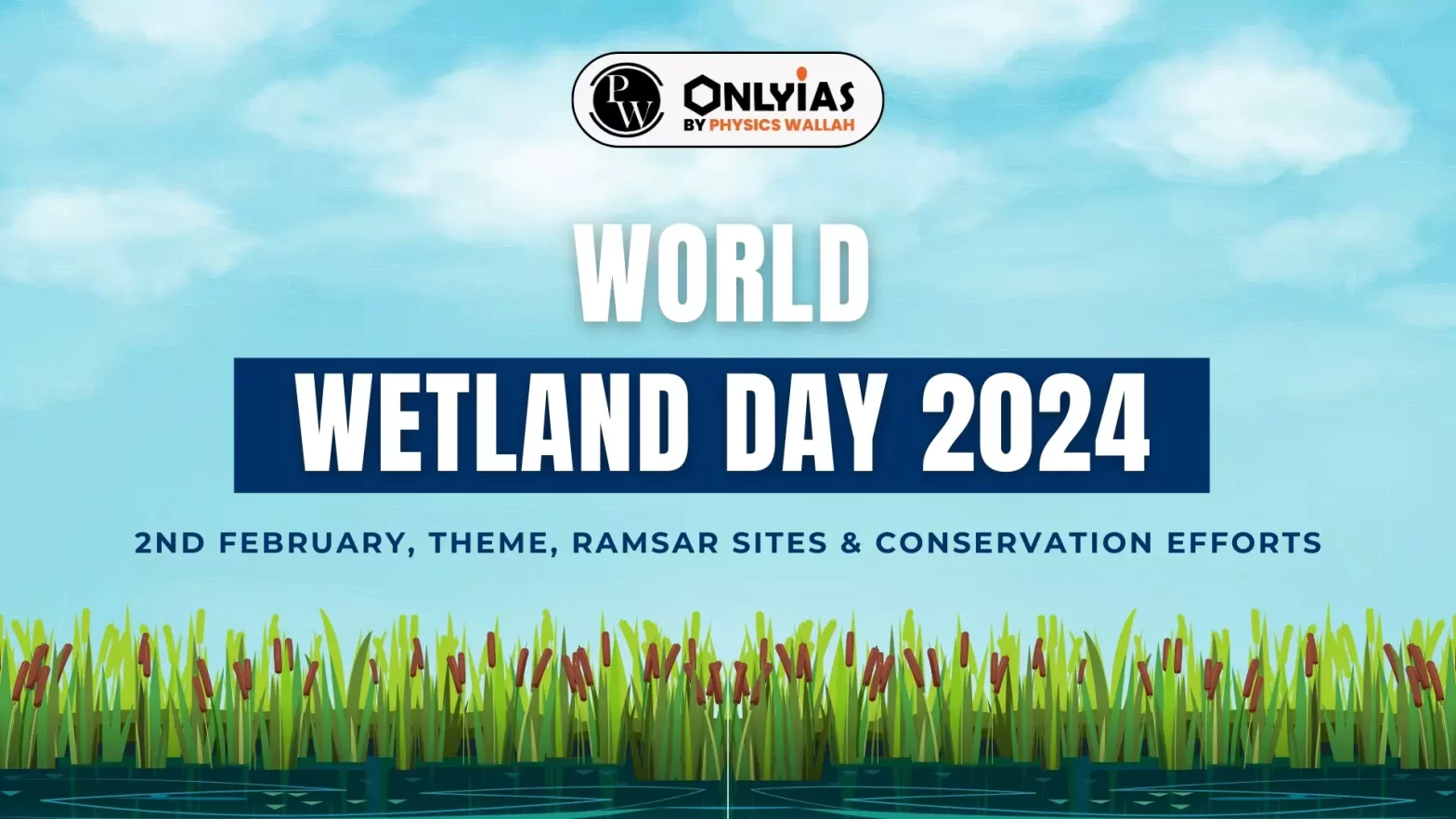World Wetlands Day 2024: Learn about the significance of wetlands, global events, and conservation efforts celebrated on this important day.

Context: The World Wetlands Day is celebrated annually across the world on 2nd February.
Role |
Description |
| Ecological Role |
|
| Hydrology |
|
| Pollution Control |
|
| Climate Change |
|
| Flood Control |
|
| Food Security |
|
| Culture and Tourism |
|
World Wetlands Day is an opportunity for us to take necessary precautions to protect the wetlands and ensure that they thrive and continue to contribute to a better planet.
| Must Read | |
| NCERT Notes For UPSC | UPSC Daily Current Affairs |
| UPSC Blogs | UPSC Daily Editorials |
| Daily Current Affairs Quiz | Daily Main Answer Writing |
| UPSC Mains Previous Year Papers | UPSC Test Series 2024 |
The World Wetlands Day is celebrated annually across the world on 2nd February.
It was on this day in 1971 that the Convention on Wetlands was adopted in the Iranian city of Ramsar on the shores of the Caspian Sea.
The theme for the World Wetlands Day 2024 is ‘Wetlands and Human Wellbeing’.
Wetlands can be defined as any area of land that is primarily covered by water, either permanently or seasonally.
Any wetland site protected under Ramsar convention is called as ‘Ramsar Site’. A Ramsar Site attracts a high degree of protection.
Total number of Ramsar sites in India is 80.
Tamil Nadu has the highest number of Ramsar sites in India (16), followed by Uttar Pradesh (10).

<div class="new-fform">
</div>